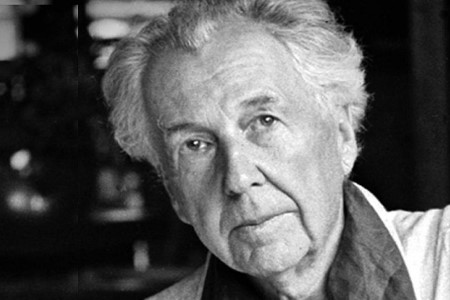Frank Lloyd Wright
Frank Lloyd Wright, born on June 8, 1867, and passing away on April 9, 1959, was a multifaceted American figure renowned as an architect, designer, writer, and educator. Over a prolific span of 70 years, he crafted the designs for more than 1,000 structures, leaving an indelible mark on the architectural landscape of the twentieth century. His influence extended globally, impacting architects through both his creations and the numerous apprentices under his guidance in the Taliesin Fellowship.
Wright’s design philosophy, termed organic architecture, emphasized harmony with humanity and the environment. This ethos found its embodiment in Fallingwater (1935), hailed as “the best all-time work of American architecture.” As a pioneer of the Prairie School movement, Wright introduced innovative concepts like the Usonian home in his vision for urban planning, known as Broadacre City.
His creative spectrum encompassed not only residential architecture but also original and groundbreaking designs for offices, churches, schools, skyscrapers, hotels, museums, and commercial projects. The integration of Wright-designed interior elements, such as leaded glass windows, floors, furniture, and even tableware, added a distinctive touch to his structures.
In his eventful life, Wright wrote several books, contributed numerous articles, and became a sought-after lecturer in both the United States and Europe. His contributions were acknowledged by the American Institute of Architects in 1991, naming him “the greatest American architect of all time.” Furthermore, in 2019, a selection of his work achieved recognition as The 20th-Century Architecture of Frank Lloyd Wright, earning a place on the prestigious World Heritage Site list.
Raised in rural Wisconsin, Wright pursued civil engineering at the University of Wisconsin before apprenticing in Chicago, initially under Joseph Lyman Silsbee and later with Louis Sullivan at Adler & Sullivan. In 1893, he established his own successful practice in Chicago, expanding his influence further by setting up a studio in his Oak Park, Illinois home in 1898.
Wright’s personal life often made headlines, from his unconventional relationships, such as leaving his first wife Catherine Tobin for Mamah Cheney in 1909, to tragic incidents like the 1914 murder of Mamah and her children at his Taliesin estate. His tumultuous marriage with his second wife Miriam Noel (1923–1927) and subsequent courtship and marriage with Olgivanna Lazović (1928–1959) added layers to the narrative of this iconic figure.
The use of images or names herein does not necessarily imply any form of management or representation or that The Celebrity Group was wholly responsible for a specific endorsement. The Celebrity Group works in partnership with many agents & managers for the supply of celebrities not represented by ourselves.



